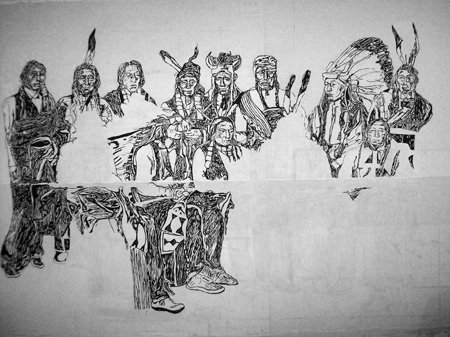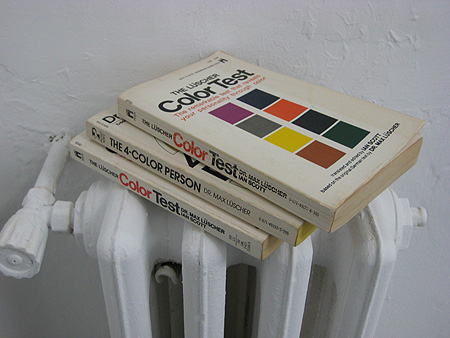Red Cloud Approaching Manhattan
Friday, August 29th, 2008
The sketch above is an artwork in progress by Argentine visual artist Magdalena Jitrik, who is known for her mostly-abstract paintings on canvas and her collective work as part of the Taller Popular de Serigrafía (a.k.a. TPS). This new work combines Magdalena’s interest in social and political history, explored through her paintings, and in the medium of propaganda that was actively taken up by TPS—which, in turn, is part of a longer history intertwining political activism and graphic arts in Latin America (TPS’s name is taken from the early twentieth century Taller de Gráfica Popular in Mexico).
To make this new work, Magdalena used as source image a group portrait of Native American Indians headed by Red Cloud. It was a photograph taken around 1860-1880. Red Cloud was a leader of the Oglala Sioux in Lakota (including then regions of Wyoming, Nebraska and the Dakotas in the USA), and known to be a major warrior, negotiator and peace-keeper. He was also a critical voice against the expansion of “white man” in North America. In his famous last speech, Red Cloud says, “Before the white man came to our country, the Lakotas were a free people. They made their own laws and governed themselves as it seemed good to them. The priests and ministers tell us that we lived wickedly when we lived before the white man came among us. Whose fault was this? We lived right as we were taught it was right. Shall we be punished for this? I am not sure that what these people tell me is true.”
Magdalena is one of four artists that I’ve selected for “Convergence Center,” an event-based, week-long exhibition that is part of the larger project Democracy in America: The National Campaign organized by Creative Time in New York. Her new work about Red Cloud, sketched above, will be a painting on canvas (118 x 117 inches), which will be hung as a banner between the entrance columns of the Armory Regiment Building in New York. This is where “Convergence Center” will take place from September 21-27, 2008. Aside from Magdalena, the three other artists in Foreign Correspondents, the international component of “Convergence Center,” are Erick Beltran (Mexico City/Barcelona), Luca Frei (Malmo) and Chu Yun (Beijing). I will also introduce their work here shortly.


